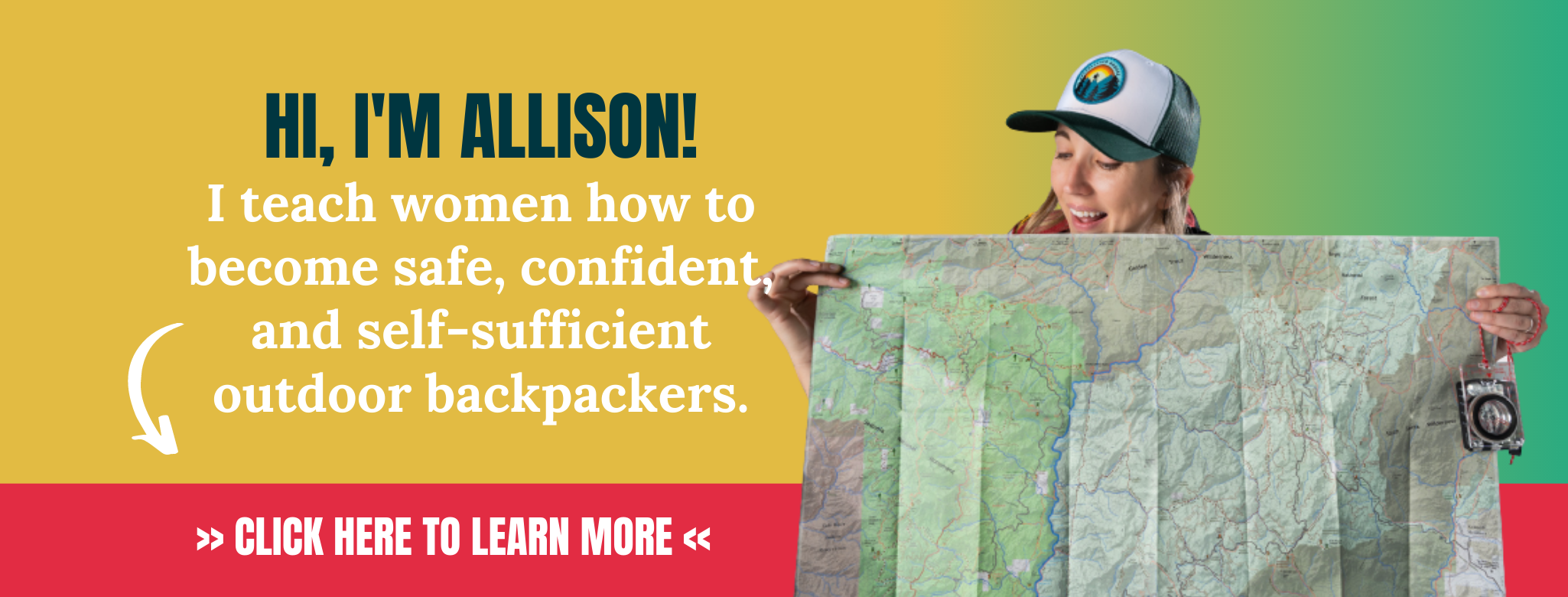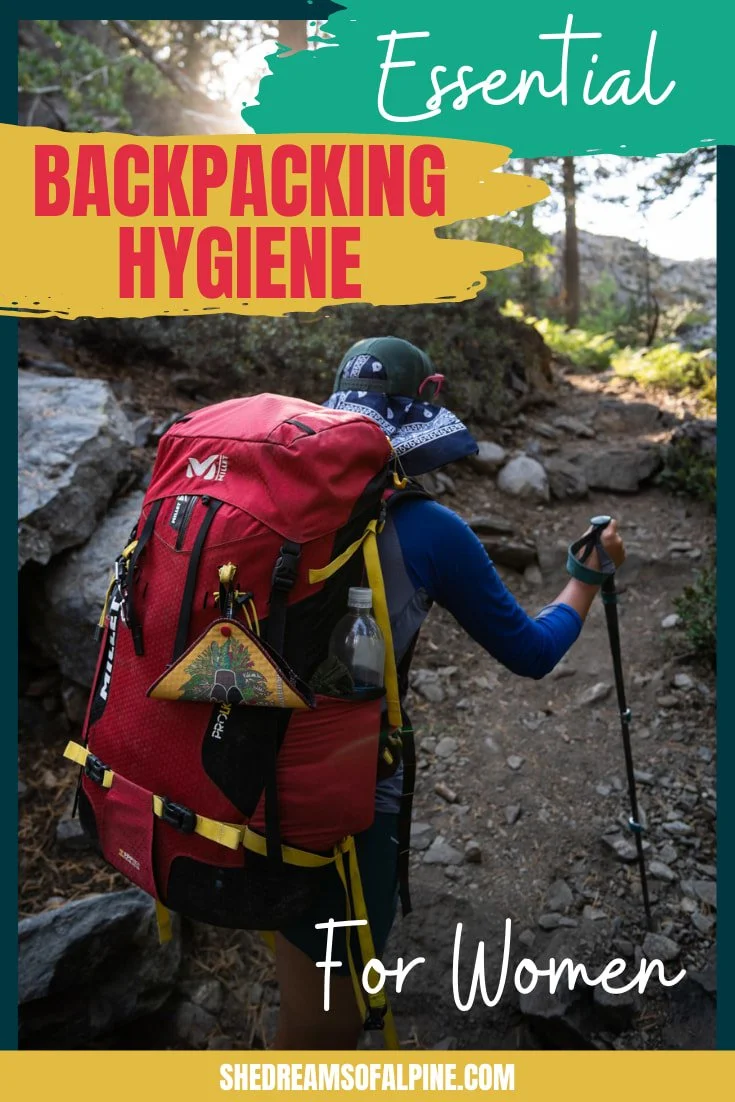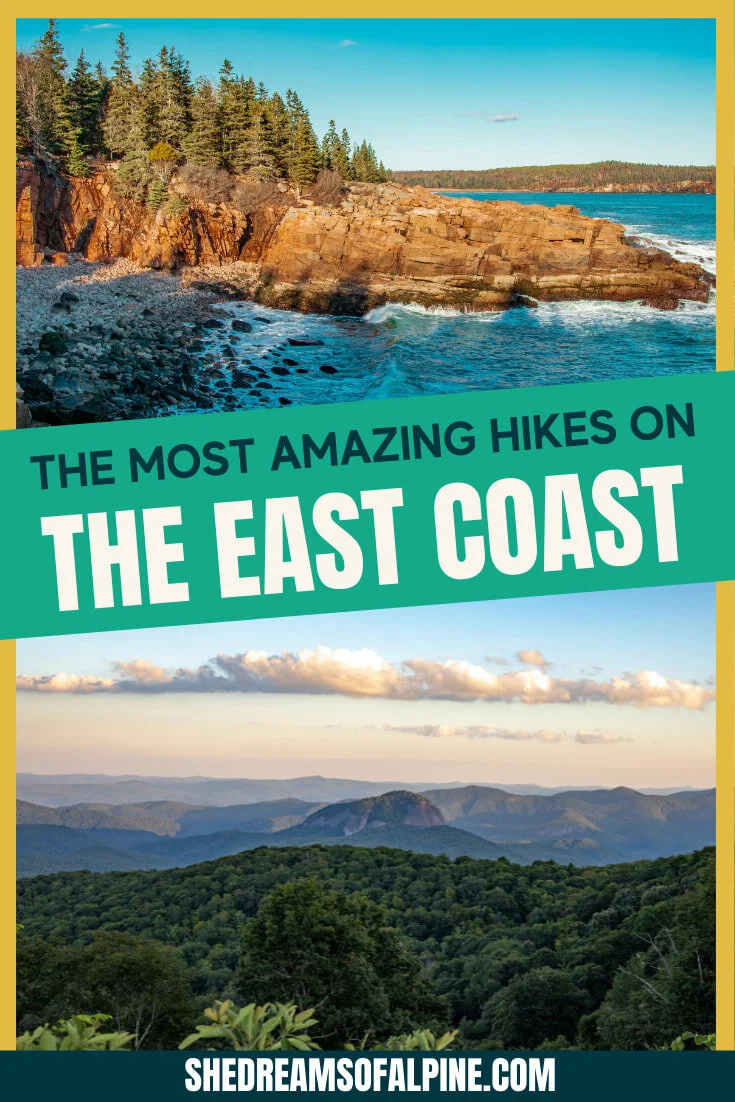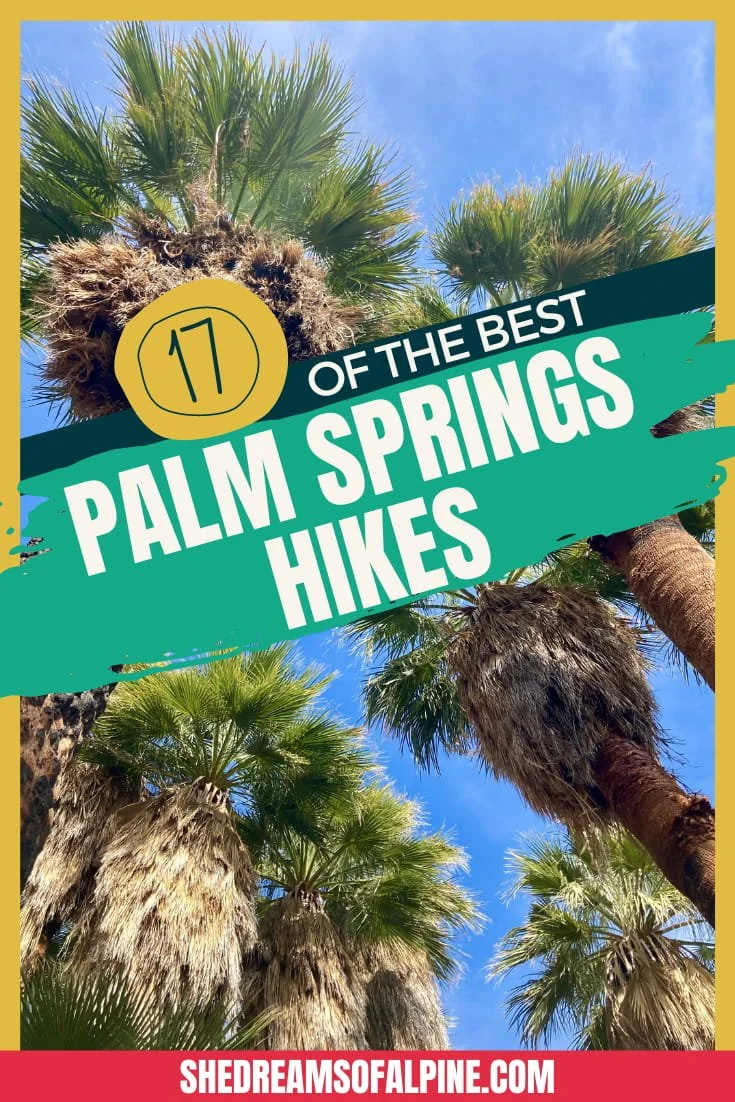How to Plan a Backpacking Trip: What You Need to Think About Before Hitting the Trail
Dreaming about taking your first backpacking trip but don’t even know where to begin? Knowing how to plan a backpacking trip is a skill in itself, and I am here to walk you through the process.
As a backpacking educator, planning a backpacking trip is my jam, and I want to help you be able to plan your own! Feeling capable and confident during the planning process will translate into feeling confident and capable on the trail.
HOW TO PLAN A BACKPACKING TRIP
This post will give you an overview of everything that goes into planning a backpacking trip. But if you get overwhelmed by the steps and feel like you could use some more guidance, that’s what my Become a Backpacking Badass program is for!
READY TO UNDERGO YOUR OWN BACKPACKING TRANSFORMATION?
Join me (and your peers) on a transformational adventure, where you will learn how to confidently go on your first ever (or perhaps your first solo) outdoor backpacking trip without the constant fear of getting lost, the debilitating worry of being unprepared, and the lurking feeling that you lack the "know-how" and skills required to stay safe on the trails. Click below to be the first to know when my one-of-a-kind backpacking program re-opens again for enrollment!
PICK YOUR DESTINATION
When starting to plan a backpacking trip, destination is definitely one of the most important decisions. I mean, you probably wouldn’t be taking a backpacking trip if you weren’t excited about where you’ll be exploring, right?
So where do you want to go? The mountains, the forest, the desert, or even the beach (like the Lost Coast Trail)? Think big picture about places on your bucket list, then you can start to narrow it down.
CONSIDERATIONS FOR PICKING A BACKPACKING DESTINATION
Season/Weather
While some trails, like the Trans-Catalina Trail (which I highly recommend!) can be backpacked all year-round, most trails have a specific season that is best for backpacking. In high elevation areas like the Sierra Nevada mountains, you’ll typically want to backpack in the summer or early fall, while in desert climates like Joshua Tree National Park, a winter backpacking trip is ideal to avoid the heat.
Length/Mileage
Another big consideration when choosing a backpacking destination is how long the trail is – both how long you’ll spend on the trail and the mileage overall and each day.
Elevation Gain
Also pay attention to how much elevation gain you’ll encounter when choosing a destination. If your trip has a ton of elevation gain, you might need to plan more days for the trip to factor in that you’ll go slower when hiking uphill, especially with a backpacking pack.
Permits
It’s also crucial to check if your dream backpacking destination requires permits – and how competitive they are to get. Some places don’t require permits at all, some places might need a free backcountry permit, and some places require entering a permit lottery.
>>>Check out my guide to getting permits for some of the most popular trails and campgrounds in California!
PLAN YOUR ROUTE
Once you’ve chosen your destination, your next step to plan a backpacking trip is to plan your route. Some destinations will have one specific trail to follow, but others will offer options. You’ll also have to figure out how you’re going to split up your hiking days and where you will plan to camp each night you’re on the trail.
Once you have your route planned, I highly recommend downloading GPX tracks and a map of the area. You can’t depend on cell phone service in the backcountry, so you need to be able to navigate offline.
DON’T HAVE A GPS? YOU SHOULD.
I believe every hiker and backpacker should strive to be self-sufficient, and that includes knowing how to practice smart navigational skills in the outdoors.
This is an important safety skill set that I teach in-depth inside of my backpacking program. There’s no reason to risk getting lost in the outdoors.
Here’s what I recommend to get started:
(Note: This list contains affiliate links)
Gaia is offering a special 20% discount on a premium account to those who subscribe online through my link.
Don’t know where to start? If you need help with some Gaia GPS basics, download my quick Gaia GPS navigation 101 guide.
2) Get an SOS Device: Once you are able to, I recommend investing in some sort of SOS communication device like the Garmin inReach Mini or the Garmin inReach Explorer+ . These devices provide not only GPS tracking capabilities, but also an SOS satellite search and rescue communicator and text communication abilities in the backcountry.
My Go-To Trail Setup: The Gaia GPS app (premium subscription) + the Garmin inReach Mini.
Alternative to Garmin: Pair your Gaia GPS App with the Zoleo SOS device . With this set up, the Gaia GPS App serves as your GPS navigation device, and the Zoleo serves as an SOS/communication device.
Learn more about the best GPS devices for hiking here.
PUT IT ON THE CALENDAR
Even if you don’t need permits for your backpacking trip, I still recommend putting it on the calendar to make it a priority. It’s easier to stick to your plan if you’ve committed to it and set aside the time on your calendar.
If you got a permit for your backpacking trip, obviously put those dates on the calendar! If you’re backpacking a trail that doesn’t require permits, consider the season and the weather, and pick a time that works in your schedule.
START TRAINING
A big part of planning a backpacking trip is making sure you’re physically prepared. So once you get your backpacking trip on the calendar, it’s a good idea to make a training plan so you can feel strong and ready by the time you hit the trail.
A basic training plan will ramp up mileage and elevation gain over time as you get closer to your backpacking trip. You also want to make sure you spend time hiking with weight in your pack similar to what you’ll be carrying when you backpack.
>>>If you don’t know where to start, check out my Training for Hiking How-To Guide here!
GRAB MY [FREE] OUTDOOR BACKPACKER STARTER KIT
I created the Ultimate Outdoor Backpacker Starter Kit for you (and it's FREE)! This starter kit is filled with 14 pages of my best hiking and backpacking tips to help you learn what it takes to become a safe, confident, and self-sufficient outdoor backpacker!
GET YOUR GEAR
When you plan a backpacking trip, part of the process is making sure you have the gear you need.
If you need to buy gear, I highly recommend an REI membership. Not only does REI have a great selection of gear, but membership benefits include dividends and free shipping, which make the REI membership totally worth the one time investment.
You can also get scrappy about getting used gear! Check Facebook marketplace for sales on used gear and head to used gear stores if you have one nearby. REI also has a used gear program where you can buy online.
Also, always make sure to test out your gear before you head on a backpacking trip! Whether setting up your new tent in your backyard, making sure your camp stove lights properly, or testing that your water filter isn’t clogged, it’s important to make sure everything works properly so you're not stuck without a crucial piece of gear in the backcountry.
Backpacking packing list
Here are a few absolutely essential items you should make sure to pack when you’re planning a backpacking trip. This is NOT a comprehensive list though, so be sure to check out our Ultimate 3-5 Day Backpacking Packing List to dive in deep on what I recommend bringing on a backpacking trip.
*Please note that this list contains affiliate links.
The Therm-A-Rest NeoAir XTherm sleeping pad is my favorite sleeping pad. It's lightweight and easy to pack. It's super comfortable (no body parts touch the ground), and it's warm!
Again, this is NOT a full backpacking packing list! Check out the backpacking checklist below to make sure you have everything you need before hitting the trail.
DOWNLOAD OUR BACKPACKING PACKING CHECKLIST
Never leave any crucial items behind when you head out on a backpacking trip! I’ve compiled all the essentials here for you so that you’ll never forget anything vital. PLUS, as a bonus, I’ve included a list of 20+ of my favorite backpacking food snacks and meals inside of this list for inspiration.
MAKE A SAFETY PLAN
Now that you’ve completed most of the steps to plan a backpacking trip, there’s one more key thing you need to do before you pack up and actually hit the trail – create a safety plan.
Always share your itinerary - including trailhead you’re departing from, planned campsites, and when you should return from your trip - with a trusted friend or family member. Be sure to let them know when to expect you to be in contact and at what time you would be considered overdue.
I also recommend bringing a satellite communicator whenever you go on a backpacking trip. The Garmin inReach Mini or Zoleo are both great options, and having a way to communicate when something goes wrong or you’re just running behind provides some peace of mind.
And that’s the quick rundown of how to plan a backpacking trip! Hope this info helps you as you begin planning your own backpacking trip and get ready to hit the trail. If you have any questions as you go through the planning process, let me know in the comments.
LOOKING FOR MORE BACKPACKING RESOURCES?
Check out these other blog posts to help you hit the trails!
7 Reasons Why Women Make Great Backpacking Leaders on the Trail
Essential Backpacking Hygiene Tips & Feminine Care in the Outdoors
Cheers,
Allison - She Dreams of Alpine


















Beginner’s Guide to Winter Hiking | You don’t have to let cold temperatures or the trails being covered in snow stop you from getting outside. But winter hiking does have different challenges than hiking in more mild seasons, so it’s important to be well-prepared before embarking on a winter hike. This guide will go over the basics of winter hiking, including appropriate clothing, necessary gear, and safety considerations. | shedreamsofalpine.com